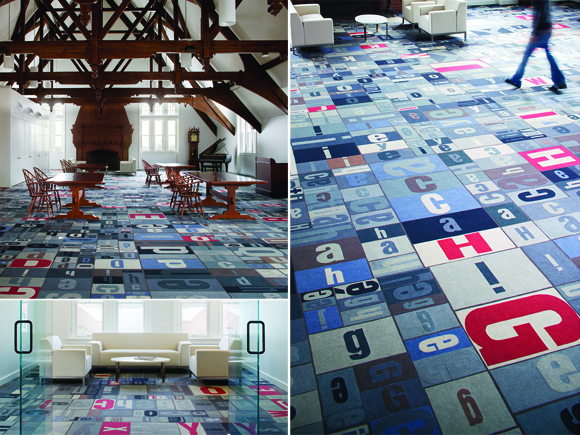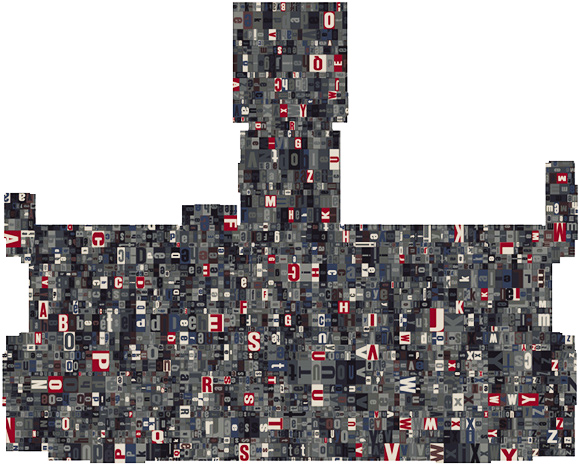
Material: custom felted carpet, 3500 sq ft

Material: custom felted carpet, 3500 sq ft
ground, a custom felted carpet, was commissioned for Pembroke Hall at Brown University at the time of the building's renovation by architect Toshiko Mori. This renovation established a new space for the intersection of two esteemed centers of research at Brown: Cogut Center for Humanities and Pembroke Center for Teaching and Research. These centers share a foundational research agenda that explores the relationship between the languages we use and the cultures they produce. While the Latin alphabet has undergone many changes in its thousand years of history, its compactness, simplicity and flexibility have made it the world's oldest consistently used writing system that still maintains its original signs and sounds. While not neutral, the Latin alphabet is a field that is mutual to both centers of research, forming the common linguistic materials from which both programs arise.
If the cultural legacy of the 500-year-old invention of moveable type was the facilitation of mass literacy through the distribution of alphabetic writing, the corollary of that legacy was the standardization of regional dialects. While the development of moveable type and printing presses led to linguistic and cultural homogenizations, the individual letterforms continued to retain their innate and infinite re-arrangeability. Now further amplified and extended by technologies of digital production and distribution, the inherent flexibility of the alphabet remains the ongoing ground of reading and writing, storing and communicating ideas across time and distance. Like a computer keyboard, a drawer of moveable type remains a literal sea of possibility.

Inspired by the object and surface qualities of type drawers used by letterpress printers and emphasizing the constant and infinite possibility of the individual letterform, the carpet graphically echoes the structures for, and sound units of, the conversations that take place in this common area. Arranged according to the spellings of the letters that signify and name their individual sounds in English, French, German, Italian and Spanish, the design embodies the constant units which form how we hear, speak, read and write the past, present, and future developments of these languages. The tactile alphabetic fields become the ground for possibility, materially absorbing the reciprocal acts of speaking and listening that will be the ongoing history of this space.
Photo credit: Warren Jagger